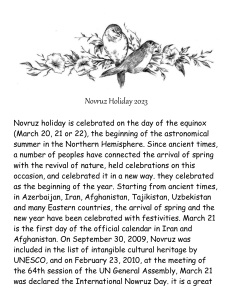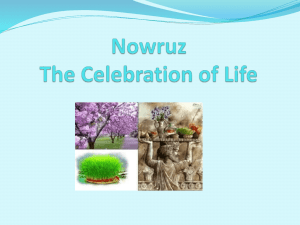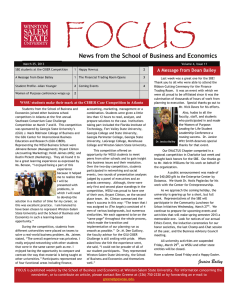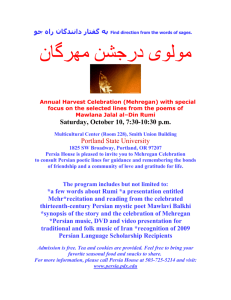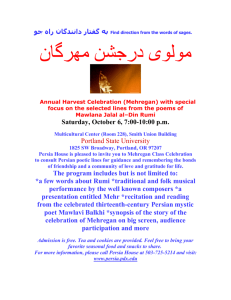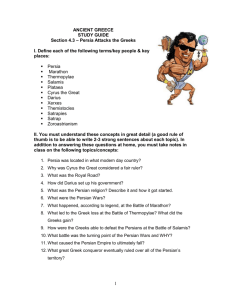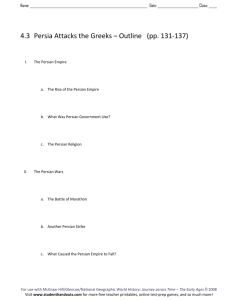Nowruz: Description: , 2016
advertisement
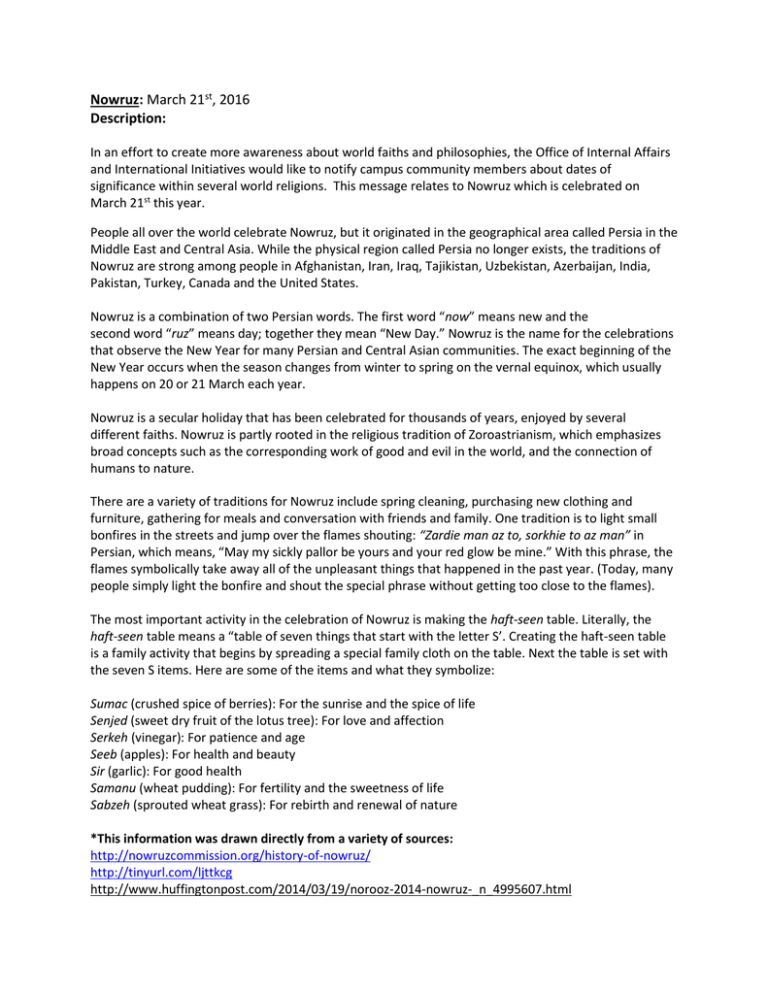
Nowruz: March 21st, 2016 Description: In an effort to create more awareness about world faiths and philosophies, the Office of Internal Affairs and International Initiatives would like to notify campus community members about dates of significance within several world religions. This message relates to Nowruz which is celebrated on March 21st this year. People all over the world celebrate Nowruz, but it originated in the geographical area called Persia in the Middle East and Central Asia. While the physical region called Persia no longer exists, the traditions of Nowruz are strong among people in Afghanistan, Iran, Iraq, Tajikistan, Uzbekistan, Azerbaijan, India, Pakistan, Turkey, Canada and the United States. Nowruz is a combination of two Persian words. The first word “now” means new and the second word “ruz” means day; together they mean “New Day.” Nowruz is the name for the celebrations that observe the New Year for many Persian and Central Asian communities. The exact beginning of the New Year occurs when the season changes from winter to spring on the vernal equinox, which usually happens on 20 or 21 March each year. Nowruz is a secular holiday that has been celebrated for thousands of years, enjoyed by several different faiths. Nowruz is partly rooted in the religious tradition of Zoroastrianism, which emphasizes broad concepts such as the corresponding work of good and evil in the world, and the connection of humans to nature. There are a variety of traditions for Nowruz include spring cleaning, purchasing new clothing and furniture, gathering for meals and conversation with friends and family. One tradition is to light small bonfires in the streets and jump over the flames shouting: “Zardie man az to, sorkhie to az man” in Persian, which means, “May my sickly pallor be yours and your red glow be mine.” With this phrase, the flames symbolically take away all of the unpleasant things that happened in the past year. (Today, many people simply light the bonfire and shout the special phrase without getting too close to the flames). The most important activity in the celebration of Nowruz is making the haft-seen table. Literally, the haft-seen table means a “table of seven things that start with the letter S’. Creating the haft-seen table is a family activity that begins by spreading a special family cloth on the table. Next the table is set with the seven S items. Here are some of the items and what they symbolize: Sumac (crushed spice of berries): For the sunrise and the spice of life Senjed (sweet dry fruit of the lotus tree): For love and affection Serkeh (vinegar): For patience and age Seeb (apples): For health and beauty Sir (garlic): For good health Samanu (wheat pudding): For fertility and the sweetness of life Sabzeh (sprouted wheat grass): For rebirth and renewal of nature *This information was drawn directly from a variety of sources: http://nowruzcommission.org/history-of-nowruz/ http://tinyurl.com/ljttkcg http://www.huffingtonpost.com/2014/03/19/norooz-2014-nowruz-_n_4995607.html Prairie View A&M University acknowledges and embraces the diversity of our students, faculty, and staff. Due to the great number and diversity of viewpoints, this resource is not able to provide an exhaustive list of significant dates for all faith and philosophical traditions. Likewise, the practice of special dates may differ based on region, denomination or generational differences.
